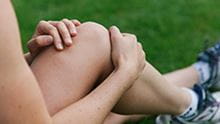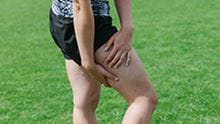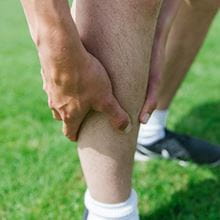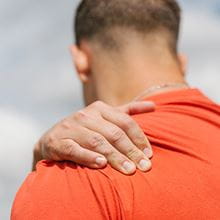The term hamstring is a commonly used to group the three main muscles that run down the back of your thigh, from your hip to just below the knee. A hamstring strain, tear or pull is a common injury if you’re exercising regularly.
Injury to these muscles can occur when they are suddenly stretched beyond their limit, so when you’re sprinting, lunging or jumping. There are three grades of hamstring injury, and depending on severity, you will experience different symptoms. These are:
Grade 1 – Mild hamstring strains will cause a sudden pain, followed my muscle tenderness. It may also be painful to move your leg.
Grade 2 – Partial hamstring tears are more painful and tender. There may also be some bruising and swelling to the back of the thigh, and muscle strength may be reduced.
Grade 3 – Severe hamstring tears will be extremely tender, painful, swollen and bruised. There may also be a “popping” sensation at the time of injury, and you’ll be unable to use the affected leg.
Most hamstring injuries can be cared for through rest and recovery at home, however if your injury is especially severe and the symptoms are getting worse, you should consult your GP. Recovery times vary depending on the grade of your injury, from a strain that may only take days to repair, to a severe tear that could take several months to heal. To aid your recovery, you should:
- Rest – Keep your leg as still as possible to avoid further damage. In severe cases a GP may recommend crutches.
- Ice – Apply cold packs to the muscle regularly. Do not apply ice directly to your skin, instead use a bag of frozen peas wrapped in a cloth.
- Compression – For grade 2-3 injuries, compress or bandage the thigh to limit swelling and prevent further damage. Simple elastic bandages are best for this.
- Elevation – For tears, keeping the affected leg raised on a pillow will minimise swelling and assist recovery.
You should also contact your GP for any pain or anti-inflammatory medication on a case-by-case basis. During the latter stages of your recovery, you can build the strength in your muscle by slowly increasing the intensity of your exercise.
Hamstring Injury Prevention
You can avoid a recurrence of a hamstring by:
- Taking the time to recover – Only returning to your full exercise programme when your muscle is 100% healed will minimise the risk of another injury.
- Adequate stretching – Paying particular attention to the affected muscle when you’re going through your pre-exercise routine will ensure your body is ready for action. Slow stretches with no bouncing are the best way to do this.
- Stay warm – Both during and after exercise, keeping your legs warm and easing the transition between 100% effort and rest will protect your muscles.
These tips are only for guidance purposes. If you want more detailed information, you should consult your GP or physiotherapist.





